ESP, ABS, and Traction Conrol
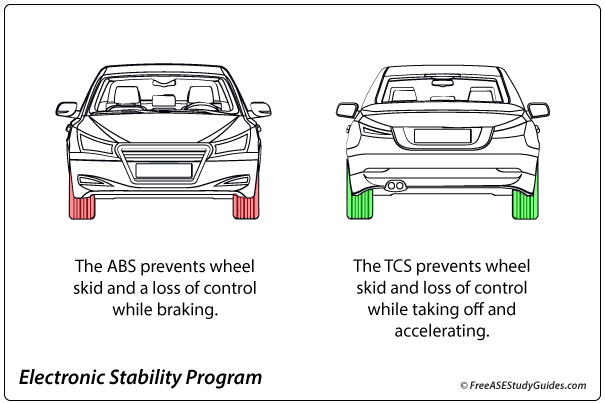
Today's electronic traction control system extends the ABS brake system. It adds torque management, reducing engine power to prevent wheel spin.
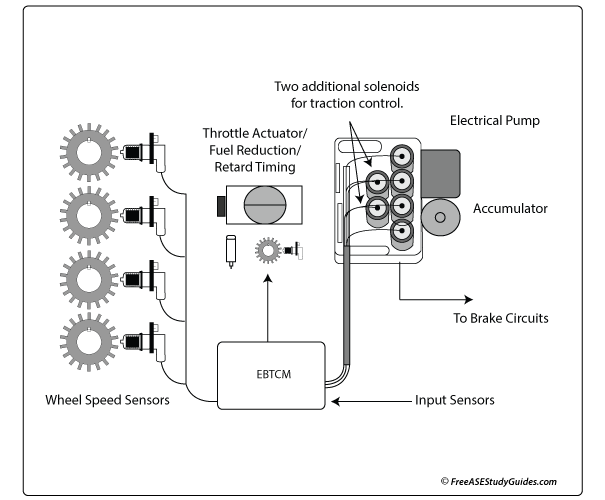
The ESP Electronic Stability Program controls the ABS and the TCS. It automatically applies individual brake units when it senses the vehicle's about to bulldoze ahead or spin out of control.
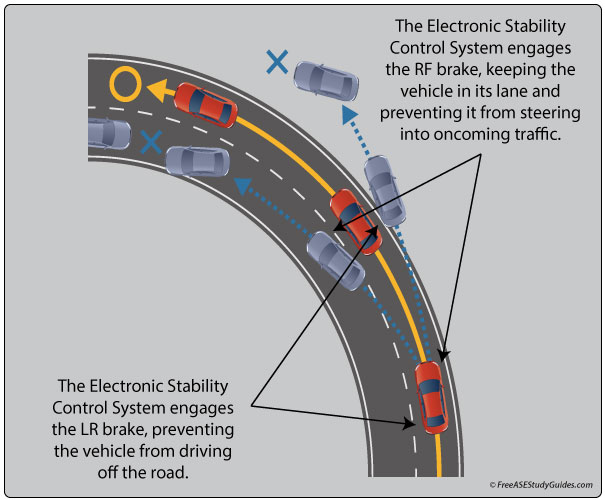
The system automatically kicks into action when the steering does not match the vehicle's direction. The control module monitors steering, wheel speed, and yaw rate sensors. When an emergency like a sudden swerve or an over or understeer occurs, it applies brake units. It reduces engine speed until the driver regains control.
G-sensor and Yaw Sensor
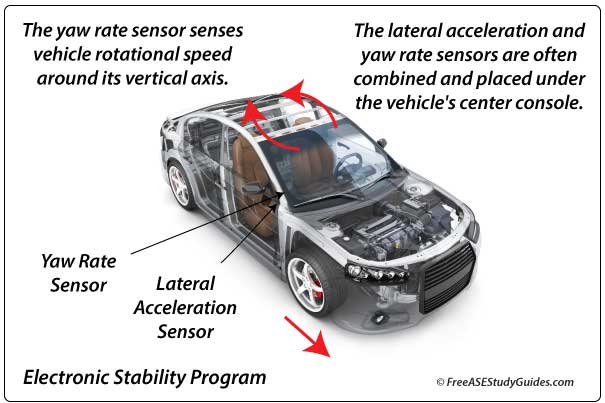
The yaw rate sensor senses vehicle rotational speed around its vertical axis. It informs the system when a vehicle is about to fishtail or roll sideways. It compares this value to those in the module. When the car is over or understeering, it decelerates and controls individual brake units until it is stable.
The lateral acceleration sensor is also known as the G-sensor. It can sense the momentum and force pushing a car sideways in a sharp turn, G-force. The lateral acceleration and yaw rate sensors are often combined and placed in the vehicle's center (under the seat or center console).
TCS Warning Light
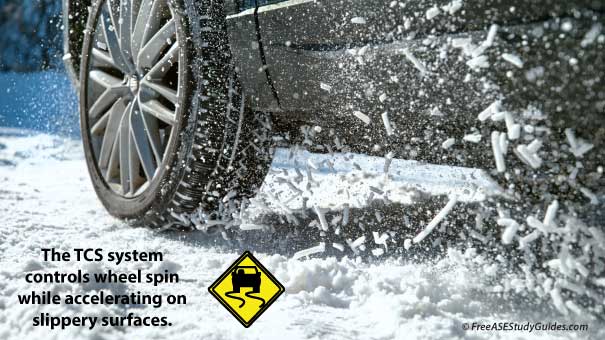
The TCS Traction Control System can be disabled for driving in mud, snow, or sand. A warning light stays illuminated until the driver pushes a switch or button, reactivating the system. Deactivating the traction control program disables skid control.